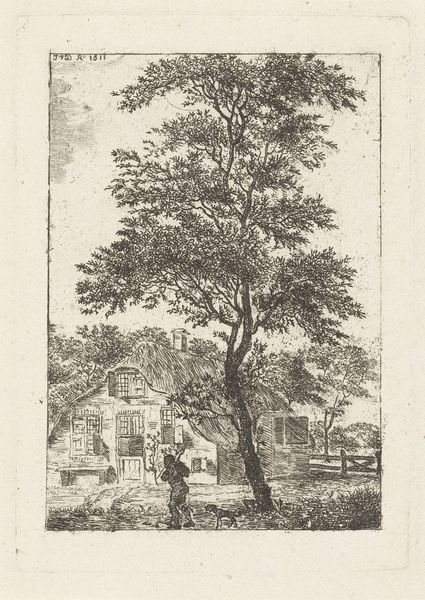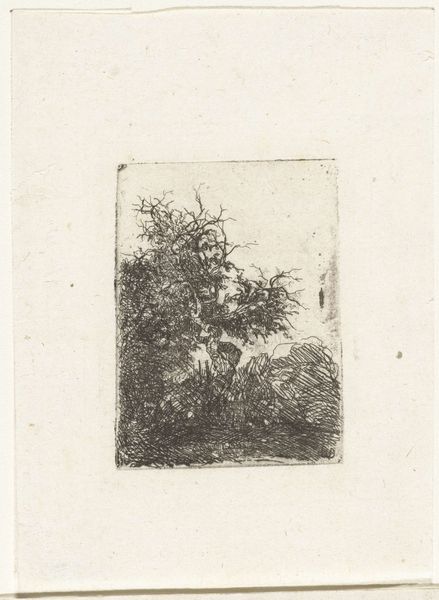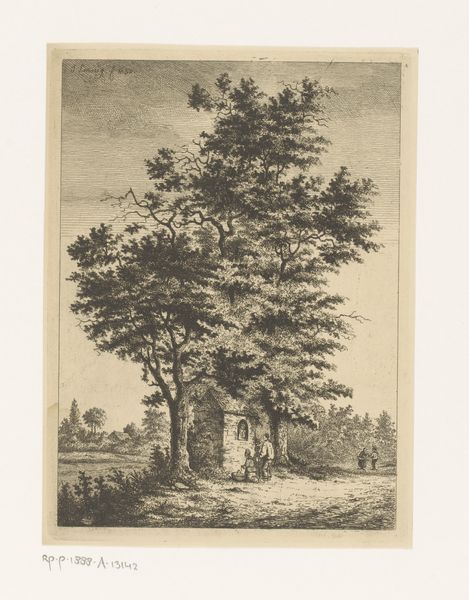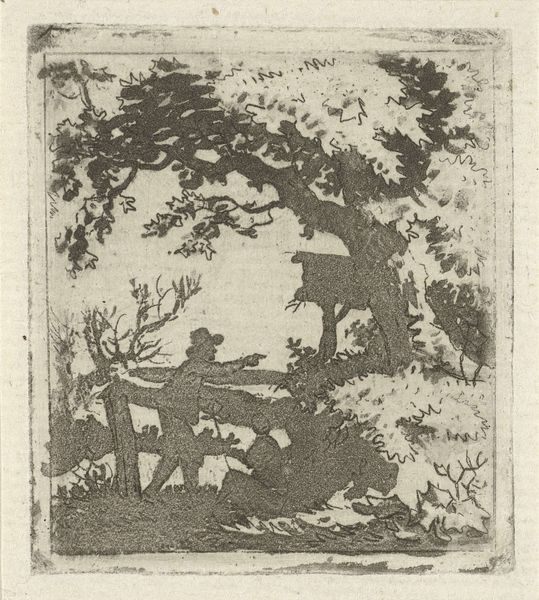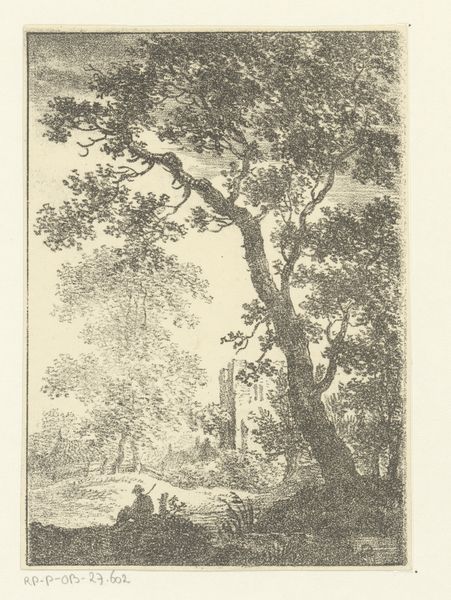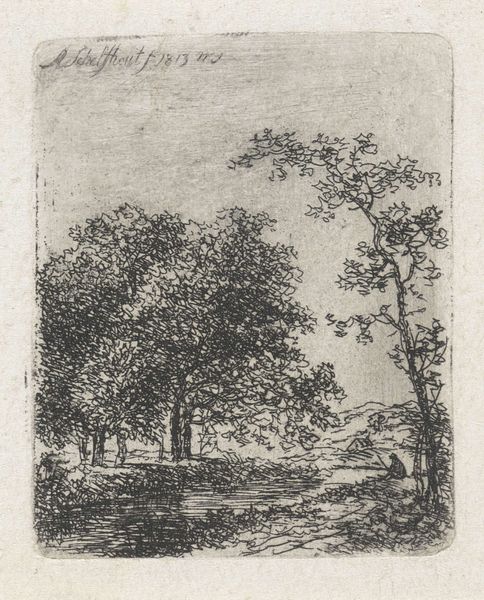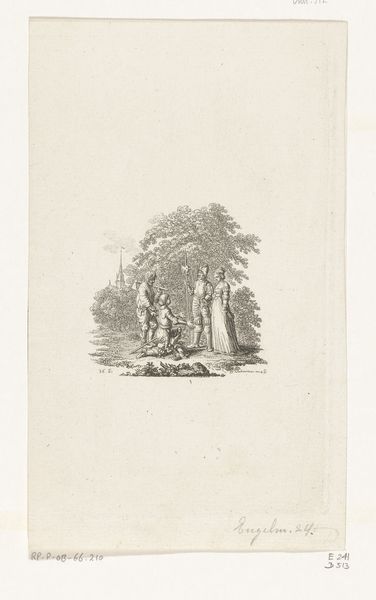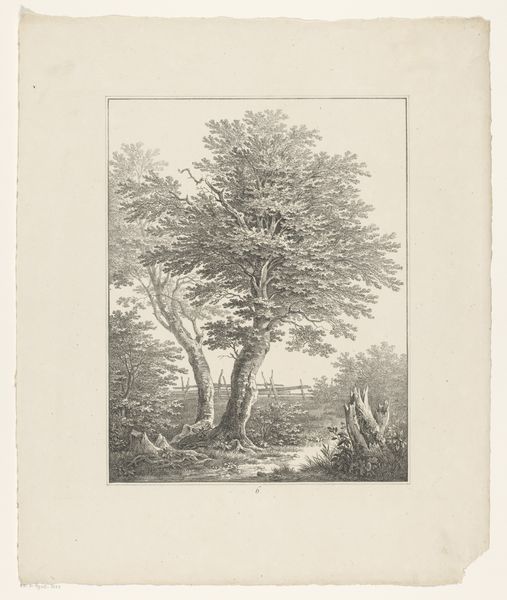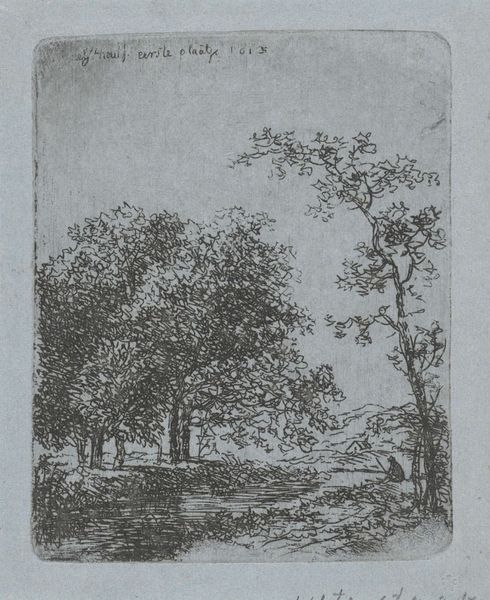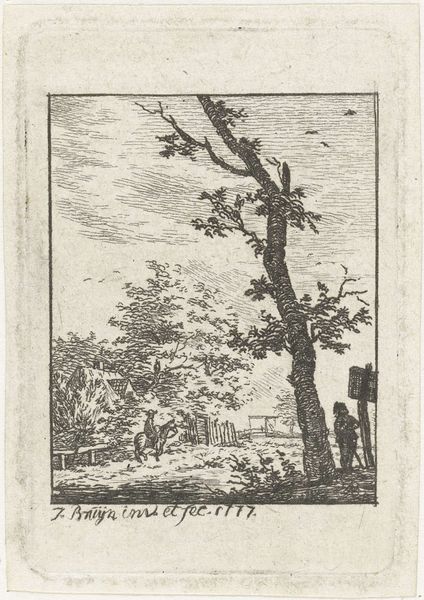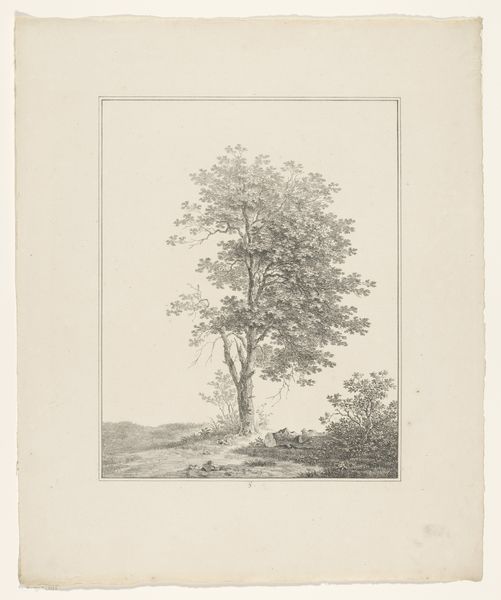
etching
#
etching
#
landscape
#
etching
#
15_18th-century
#
genre-painting
Dimensions: height 53 mm, width 38 mm
Copyright: Rijks Museum: Open Domain
Curator: Before us is "Dorpsgezicht," created in 1777 by Johanna de Bruyn. It’s an etching. Editor: It’s incredibly detailed for its size. Almost miniaturist in its precise linework, capturing a tranquil scene, though perhaps a little melancholic? The light seems subdued. Curator: Let's consider the material aspects. Etching, as a process, allowed for relatively mass production, democratizing access to art. De Bruyn's choice of etching situates this work within a context of broader social accessibility and expanding artistic markets. Editor: Certainly, but within the form itself, the use of line creates such a variety of textures! Look at the density in the tree versus the sky. The structural complexity of the tree is contrasted with the much lighter hatching in the distance. What effect does that choice have? Curator: I see that as linked to social and economic shifts. We’re observing a transition from agrarian life towards a more complex system of production. The prominent tree overshadows a scene, perhaps acting as a focal point of labour and its relation to nature. It anchors that cottage to the background, in some sense. Editor: Yes, but observe the formal devices further. The artist’s careful placement of the buildings creates a strong compositional anchor, doesn't it? The contrast between dark foreground and pale background emphasizes depth. Curator: True, and within that contrast is a dialogue regarding value. Etchings such as these were commodities. And by situating this "village view" in a place of labour and resources, what story is de Bruyn implicitly crafting around both landscape and property? Editor: Perhaps she’s pointing to a certain relationship between land, people, and production, captured within the very delicate materiality of ink and paper. The value is, dare I say it, intrinsic to the artistic vision of what can be made by a landscape. Curator: So, in revisiting de Bruyn's etching, we can recognize that its value lies both in the careful artistic production, and the broader societal conditions of 18th-century artistic production and labour. Editor: It’s rewarding to see how analyzing form gives rise to an understanding of larger thematic implications.
Comments
No comments
Be the first to comment and join the conversation on the ultimate creative platform.

